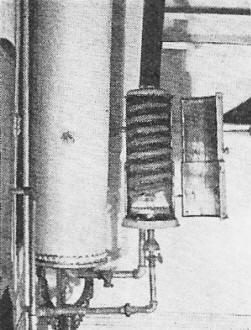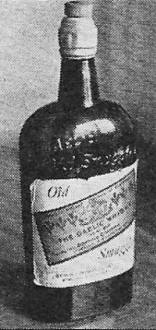At Last - Some Different Toobs! |
|
The April 1933 issue of the American Radio Relay League's monthly publication QST (Q-code for "general call to all stations") was chock full of gags, much to the delight of readers based on subsequent letters to the editor. The editors must have felt a need to alert readers that some of the material was not to be taken seriously since the Table of Contents lists them as being in the "April Fool Section." I have posted a few of them. As with so many of these vintage articles, being privy to the customs and equipment of the era is essential to "getting" the joke. I will refrain from spoiling these, but if you need some insight from an old guy (61 years in August), send me a note and I'll try to put them into perspective. One gag takes careful observation to notice, and you don't need gray hair to figure it out. At Last - Some Different Toobs! An Exclusive Photograph of the 254G63A13S in Its Native Environment Installed in a complete transmitter. The door is open to show the internal construction of the tube; Note the High-C circuit. The tank capacity is 200 liters. Heavy pipe conductors are used because of the intense heat generated in operation. Manufacturers Reluctantly Start Production of New Bottles Good news, fellows! After an interminable period of waiting, we can at last announce a few new chubes for the use of hams only. It must, in fact, have been all of four and a half days since the last preceding conglomeration came from the drill-presses (and only a measly 34 new types then) so OST's daily bulletin on new tube types had been discontinued. But now!!!! Out of the 68 new types announced today, we can only describe three in detail. These have been developed by the R.A.C. laboratories at the express request of OST (express because the request was too big to go by parcel post). Needless to say, all these new tubes have power to burn, especially the 254G63A13S, shown in one of the photographs. The 254G63A13S is made only for ultra-high-frequency kitchen transmitters. The oscillations generated are very short in wave-length, but oh boy! is there hot stuff in that tank circuit!! Did you ever back into a hot radiator with its rear end uncovered ? Well, then you know how we felt when we did the same thing. That explains perfectly the operation of this new tube. We must admit a slight disappointment when we found the new tube had only two grids. That's hardly enough for a modern tube. However the second grid isn't really a grid, if you know what we mean. Actually it's the plate, wound in a spiral so no external tank inductance will be necessary. The cathode is a multi-hole affair with jet emitters. We don't know what the inner grid is for but the makers seemed to think it was necessary. A novel feature of the 254G63A13S is the two-piece cast-iron envelope. A secret process of manufacturing a clinging vacuum makes this new development possible. The importance of this cannot be overestimated for it provides for continuous rejuvenation of the tube. When the tube becomes sluggish in action, the door can be opened and the accumulated electrons cleaned off the grid and plate with a brush. The electrons can be saved and used over again if one wishes to be ultra-economical. This tube is guaranteed to deliver plenty of red hot juice at short notice. Two New Bottles The OHNO123UGH and 123456ZZXQ!& Two small but powerful bottles which work like brothers in push-pull but not so good in parallel. Some interesting glassware has been added to the list in the 123456ZZXQ!& and the OHNO123UGH shown suitably juxtaposished in the shecond photograph. The XQ!& (for short) is at the right. It goes into oscillation with remarkable ease at any frequency, but unfortunately has a tendency to become unstable and get out of control if used continuously. Comes in several sizes, the largest variety being illustrated here. It packs a tremendous wallop and can be used with wonderful effect so long as care is taken to keep the operation below the spilling-over point. This depends mainly on the capacity of the tank. High C is desirable. A good-sized leak also is recommended. The 123UGH (also for short) is a small but highly efficient bottle particularly useful as an exciter. Its specialty is the elimination of parasites. Experience with the 123-UGH has shown, however, that in spite of its high output it is prone to give a spattery a.c. note unless used with caution. A particularly good tube to give the young squirt in the next block who calls you at 2 p.x. when you're trying to work some DX. Yep, There Are Others For instance, we have the 273DYWL29F, 36ELGH39, EIGH29AHG, $&c178, A:EUC26, 38GH20, QCCH2837, QPW029, WM2938HT, DKEIG29, 2937, WUYN &?, 29QODJ56w, EOA395FG, QPDI563, 639ALC56, (Continued on page 97)
Posted April 1, 2019 |
|



